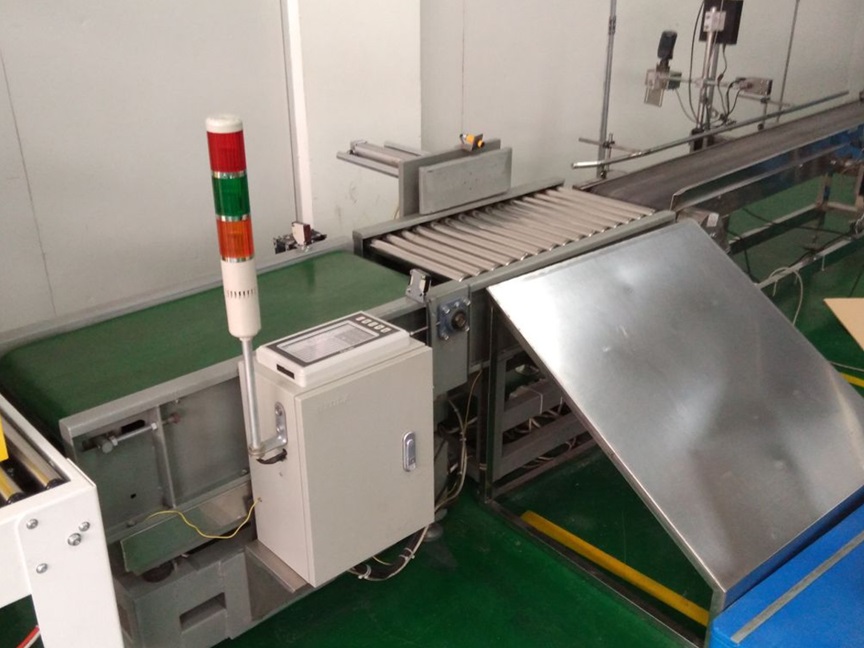What types of weighing modules are there for checkweighers? What are the differences?
2024-07-25
As the core component, the
weighing module of the
checkweigher directly determines its weighing accuracy, stability and working efficiency. In modern industrial production,
checkweighers are widely used in food, medicine, chemical and other industries to ensure product quality and control production costs. This article will introduce the types and differences of checkweigher
weighing modules in detail to help readers better understand and apply this important equipment.
I. Types of checkweigher weighing modules
1. Static weighing module
The static weighing module is the most basic weighing method of the checkweigher. It uses a fixed sensor and a weighing platform to place the items to be inspected on the platform for weighing. The advantages of the static weighing module are simple structure and good stability, which are suitable for occasions with low accuracy requirements. However, since its weighing process requires waiting for the item to be stationary before reading, its efficiency is relatively low.
2. Dynamic weighing module
The dynamic weighing module is a weighing technology that has developed rapidly in recent years. It uses dynamic sensors and fast response algorithms to obtain the weight information of the item in real time during its movement. The advantages of dynamic weighing modules are fast weighing speed and high efficiency, which are suitable for occasions with high production efficiency requirements. At the same time, because it uses advanced algorithms for data processing, it also has high weighing accuracy.
According to different weighing principles, dynamic weighing modules can be divided into the following types:
(1) Lever dynamic weighing module: It uses the lever principle for weighing, with a simple structure and low cost, but relatively poor accuracy and stability.
(2) Electromagnetic force dynamic weighing module: It uses electromagnetic force sensors to measure the force of an object in a magnetic field to calculate its weight. Electromagnetic force dynamic weighing modules have high accuracy and stability, but are expensive.
(3) Piezoelectric dynamic weighing module: It uses the charge change generated by piezoelectric materials when they are subjected to force to measure the weight of an object. Piezoelectric dynamic weighing modules have the advantages of fast response speed and high accuracy, but are also relatively expensive.
3. High-speed dynamic weighing module
The high-speed dynamic weighing module is a weighing module specially designed for high-speed production lines. It can complete the weighing process in a very short time and output weight data in real time. High-speed dynamic weighing module adopts advanced sensor technology and high-speed data acquisition system, with extremely high weighing accuracy and stability. At the same time, it can also seamlessly connect with other equipment on the production line to achieve automated production.
2. Differences between checkweigher weighing modules
1. Weighing accuracy
Different types of checkweigher weighing modules have different weighing accuracy. Static weighing modules use fixed sensors and weighing platforms, so their weighing accuracy is relatively low; dynamic weighing modules and high-speed dynamic weighing modules use advanced sensor technology and algorithms for data processing, which can achieve higher weighing accuracy.
2. Weighing speed
Weighing speed is one of the important performance indicators of checkweigher weighing modules. Static weighing modules need to wait for the object to be stationary before reading, so the weighing speed is slow; dynamic weighing modules and high-speed dynamic weighing modules can obtain the weight information of the object in real time during the movement of the object, and have a faster weighing speed.
3. Scope of application
Different types of checkweigher weighing modules are suitable for different production occasions. Static weighing modules are suitable for occasions with low precision requirements; dynamic weighing modules are suitable for occasions with high production efficiency requirements; and high-speed dynamic weighing modules are particularly suitable for weighing needs on high-speed production lines.
4. Cost
Different types of checkweigher weighing modules also differ in cost. Static weighing modules are relatively cheap due to their simple structure and low cost; while dynamic weighing modules and high-speed dynamic weighing modules are relatively expensive due to the use of advanced sensor technology and algorithms for data processing.
There are many types of checkweigher weighing modules, each with its own advantages and disadvantages. When choosing a suitable weighing module, it is necessary to comprehensively consider factors such as specific production needs and cost budgets. At the same time, it is also necessary to pay attention to regular maintenance and maintenance of the checkweigher to ensure its normal operation and extend its service life.
